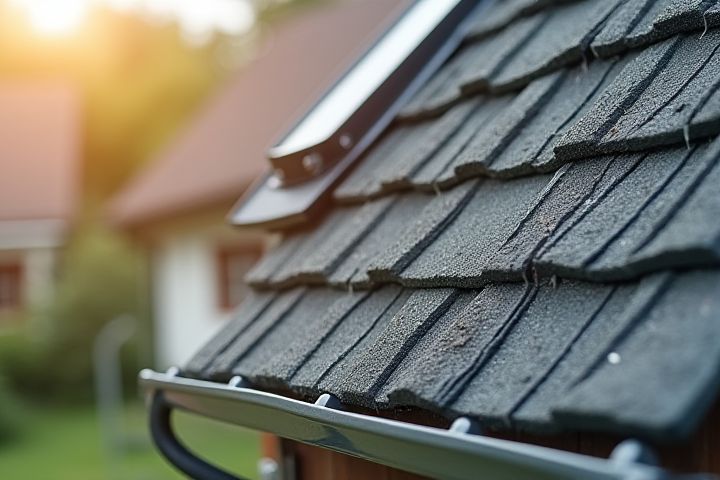
To ventilate your house adequately, begin by ensuring proper air circulation through natural ventilation methods, such as opening windows and doors during moderate weather. Installing exhaust fans in kitchens and bathrooms can efficiently remove moisture and odors, improving indoor air quality. Utilize air purifiers equipped with HEPA filters to capture allergens and pollutants, further enhancing the air you breathe. Consider upgrading HVAC systems with fresh air intakes, which allow outside air to mix with conditioned air, maintaining a balanced environment. Regularly inspect and clean ductwork to prevent dust and debris accumulation, ensuring optimal airflow throughout your home.
How To Ventilate A House Adequately
Open windows regularly
Open windows regularly to ensure adequate ventilation in your home. Aim to air out your space for at least 15-30 minutes each day, especially during the morning or evening when outdoor air is cooler. This practice helps reduce indoor pollutants and improves air quality, contributing to a healthier living environment. For optimal results, create cross-ventilation by opening windows on opposite sides of the house to maximize airflow.
Use exhaust fans
Using exhaust fans effectively can significantly improve the ventilation in your home. Install exhaust fans in key areas like kitchens and bathrooms, where moisture and odors accumulate; this helps to expel stale air and reduce humidity levels. Running these fans for at least 15 minutes after cooking or showering can enhance indoor air quality by eliminating toxins and preventing mold growth. Ensure that your exhaust fans are appropriately sized for the space, with a recommended air flow of 100 CFM (cubic feet per minute) for bathrooms and higher for kitchens, to achieve optimal results.
Install air vents
Install air vents strategically throughout your home to enhance airflow and improve indoor air quality. Consider placing vents in high-traffic areas like hallways and near heat sources to facilitate circulation. Aim for at least one vent per room to ensure even distribution, with a total of 1 square foot of vent space per 100 square feet of living area recommended by experts. Regularly inspect and clean your air vents to prevent blockages and maintain optimal performance.
Utilize ceiling fans
Utilizing ceiling fans effectively can significantly improve your home's ventilation by promoting air circulation throughout living spaces. Ensure that your ceiling fans are set to rotate counterclockwise during warmer months, creating a cooling breeze that helps draw warm air upward and keeps you comfortable. In the winter, switch the fan rotation to clockwise to push warmer air down, enhancing heat distribution efficiently. For optimal airflow, position your ceiling fans strategically in larger rooms and combine their use with open windows for cross-ventilation, allowing fresh air to enter while stale air is expelled.
Consider air purifiers
Air purifiers can significantly enhance indoor air quality by removing pollutants and allergens, making them a valuable addition to your home ventilation strategy. Opt for a high-efficiency particulate air (HEPA) filter model that can capture 99.97% of particles as small as 0.3 microns, ensuring cleaner air circulation. For optimal performance, place purifiers in commonly used areas, such as the living room and bedrooms, and ensure they are sized appropriately for your space, with coverage typically measured in square feet. Regularly replace filters according to the manufacturer's recommendations, typically every 6 to 12 months, to maintain peak efficiency and safeguard your respiratory health.
Create cross ventilation
To create effective cross ventilation in your home, open windows or doors on opposite sides of the building to allow air to flow freely through. Ideally, use at least one window on the windward side to capture fresh air, while the leeward side allows warm air to escape. Position fans strategically to enhance airflow; for instance, place an exhaust fan in the window to draw hot air out while opening another window across the room for cooler air to enter. Ensure that no obstructions, such as furniture or tall plants, block the air passage to maximize the benefits of cross ventilation.
Regularly clean ducts
Regularly cleaning ducts is essential for maintaining optimal indoor air quality in your home. Dust, allergens, and pollutants accumulate in ductwork over time, hindering airflow and potentially compromising health. By scheduling professional duct cleaning or using a vacuum equipped with HEPA filters, you can effectively remove these contaminants, ensuring that fresh air circulates throughout your living space. This proactive approach not only improves ventilation but also enhances the efficiency of your HVAC system, ultimately reducing energy costs.
Use a dehumidifier
A dehumidifier is essential for reducing indoor humidity levels, helping to prevent mold growth and maintaining overall air quality in your home. You should position the dehumidifier in damp areas, such as basements or bathrooms, to effectively absorb excess moisture. Regularly empty the water tank or set up a continuous drainage option for optimal performance. Investing in a high-efficiency dehumidifier can enhance your home's ventilation strategy, providing a healthier living environment.
Maintain HVAC system
To maintain an HVAC system effectively, schedule professional inspections at least twice a year, ensuring optimal operation and efficiency. Regularly change or clean air filters every 1 to 3 months to enhance air quality and system performance, as clogged filters can restrict airflow by up to 15%. Inspect ductwork for leaks or blockages, as up to 30% of heated or cooled air can be lost through poorly sealed ducts, leading to higher energy costs. You should also ensure that all vents are unobstructed by furniture or decorative items, promoting adequate airflow throughout your home.
Avoid indoor pollutants
To ventilate your house adequately and avoid indoor pollutants, aim for a ventilation rate of 0.35 air changes per hour, which helps reduce harmful airborne contaminants. Open windows and doors for at least 15-20 minutes daily to allow fresh outdoor air to circulate, especially when outdoor air quality is good. Employ high-efficiency particulate air (HEPA) filters in your HVAC system to trap allergens and particulates, which can decrease indoor pollutant levels significantly. Consider using exhaust fans in kitchens and bathrooms to eliminate moisture and odors, ensuring spaces remain fresh and healthy.
